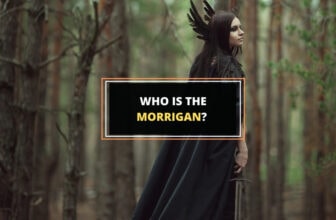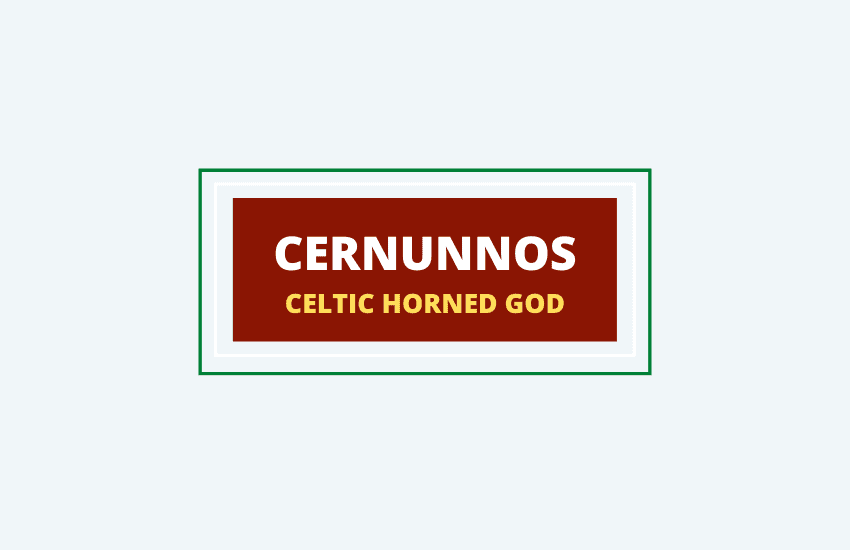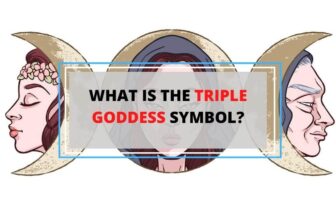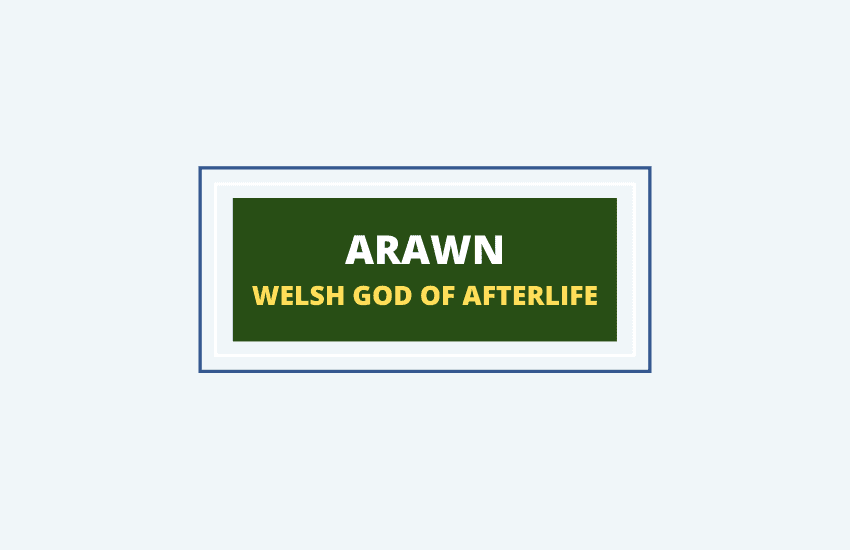
Table of Contents
In Celtic mythology, the goddess Danu, also known as Anu or Dana, is the ancient mother of all gods and of the Celtic people. She was thought to be both the original goddess and god, an all-encompassing deity who gave birth to everything and everyone. She’s often associated with Earth, waters, winds, fertility, and wisdom.
The Origin of the Goddess Danu
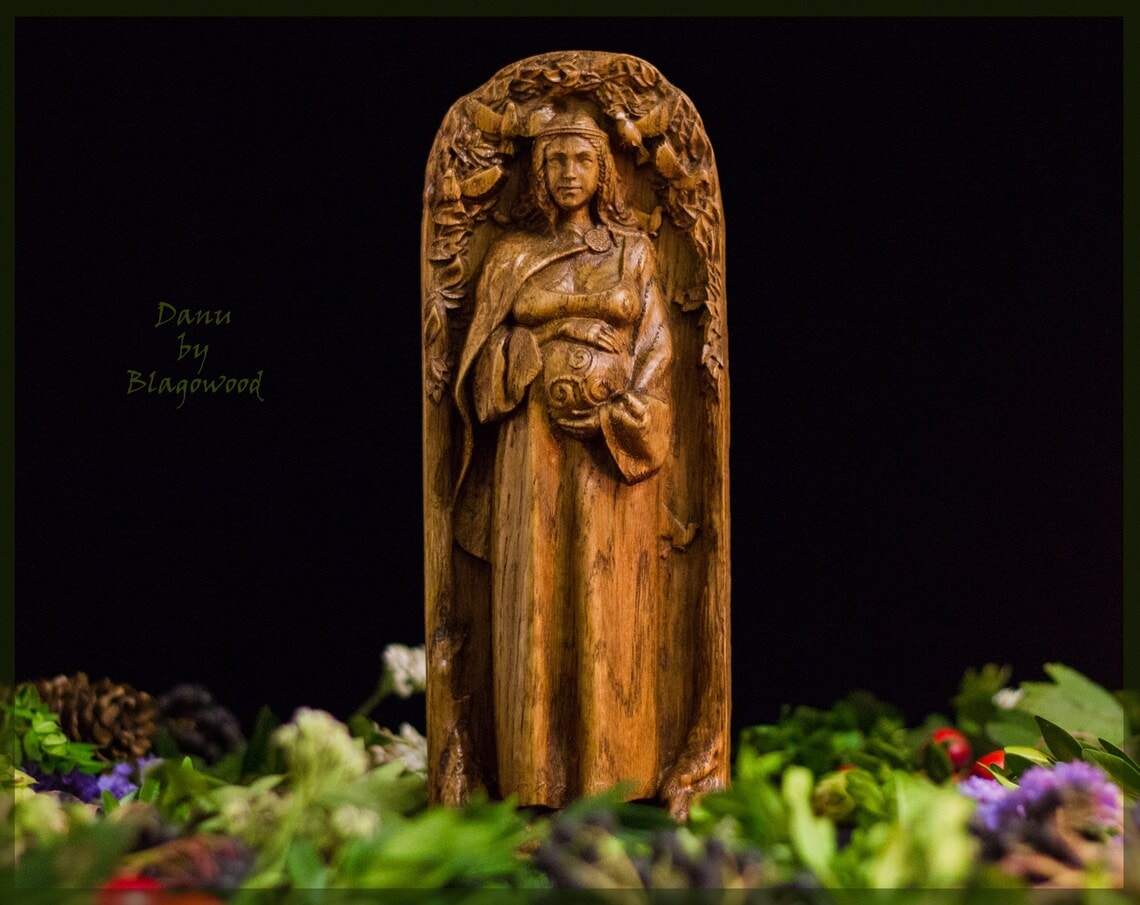
Although known as the great mother who gave life to all things and beings, not much is known about the goddess Danu, and her origin is shrouded in mystery.
According to the early scholars, the name Danu is derived from an Indo-European word, which can be translated as the flowing one. Others believe that the word stems from the ancient Scythian language, meaning the river. For this reason, it was believed that the goddess represented the Danube River.
Linguists also associated her name with the Proto-Indo-European word dueno, which means good, and Proto-Celtic duono, meaning aristocrat.
In ancient Irish language, the word dan means skill, poetry, art, knowledge and wisdom.
In Irish or Celtic myths, the mysterious matriarch is mostly recognized through the story of the Tuatha Dé Danann, which means people of the goddess Danu. They were thought to be the original inhabitants of Ireland who were extremely creative, crafty, and skilled, drawing these talents from Danu herself.
As the supreme matriarch, the Danu goddess breastfed all the gods, giving them wisdom and knowledge. She was also associated with the Earth and wind, being responsible for the agricultural blessings of Irish lands. In the Celtic world, she was also considered the goddess of the rivers and other big bodies of water. One of the major rivers in Europe, the Danube River, was named after her.
In Neopagan tradition, Danu was revered as the triple goddess, appearing as the maiden, mother, and crone or hag. As one of the threefold goddesses of war, she could shift into different animals.
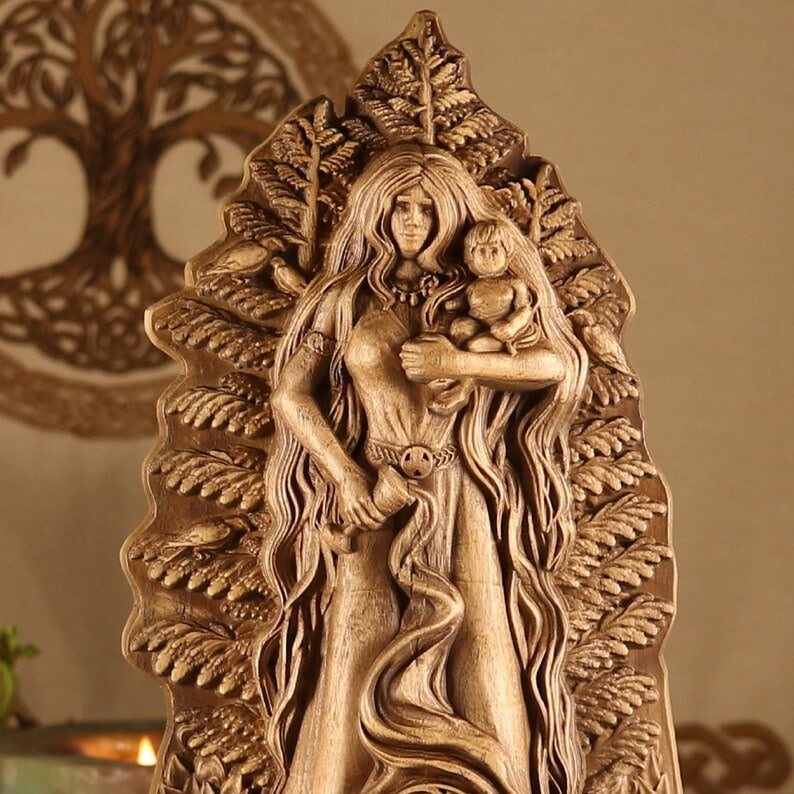
Goddess Danu’s Most Significant Myths
There aren’t many Celtic myths and legends about the goddess Danu, even though she was regarded as the Great Mother of Ireland. However, two most significant myths reference her and help us get a better picture of her character.
The Birth of Dagda
The first story depicting the goddess Danu was that of Bile and Dagda. Bile was the god of light and healing, appearing as an oak tree in the story. Oak trees were thought to be sacred because of their exceptional height. People believed they were connected to the divine because their branches extended up into the sky and heavens. Similarly, their roots stretched deep down underground, touching the Underworld.
In the story, the goddess Danu was responsible for the tree, feeding and nurturing it. From this union between Bile and Danu, Dagda was born. Dagda literally translates to the good god and was the chief leader of the Tuatha de Danann. Therefore, it was believed that Danu was the mother of Dagda.
The Tuatha de Danann
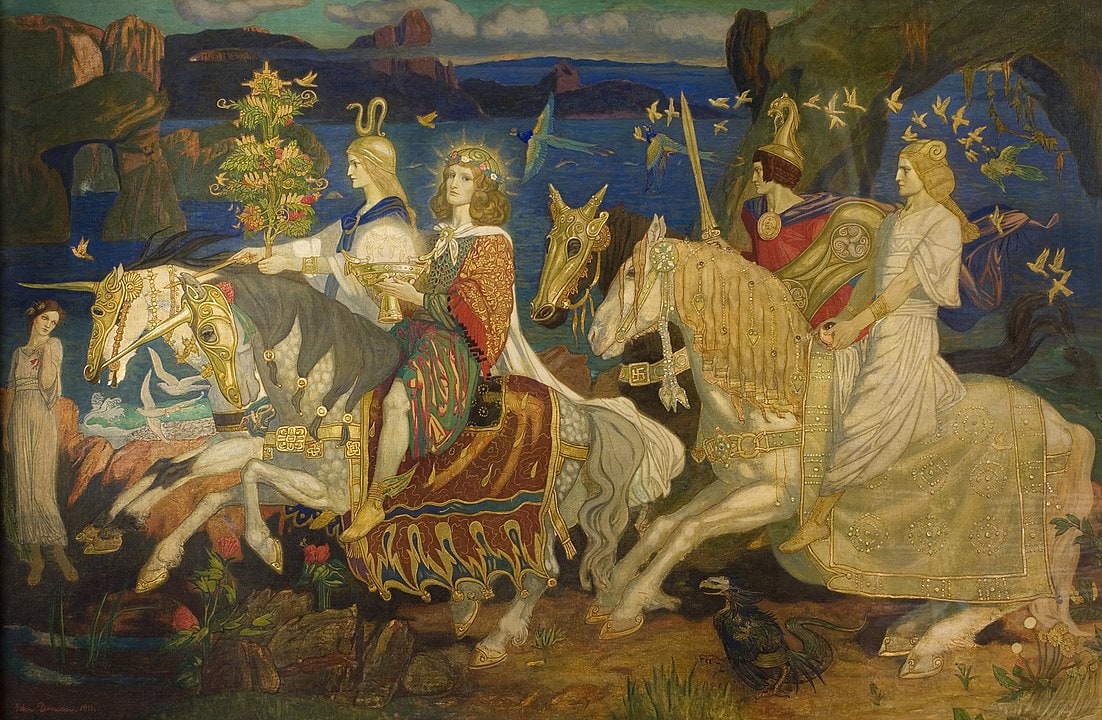
The Tuatha de Danann, meaning the Children or the Folk of the Danu Goddess, are known as the wise ones, the alchemists, and the magical people of ancient Ireland. Some regarded them as god-like creatures with supernatural powers. Others claimed they were a spiritual race who believed in the power of magic and gods and that Danu was their mother and creator.
Legend says that they were skilled warriors and healers who later became the fairy folk of Ireland. For a long time, they fought with the Milesians to reclaim their land but were eventually forced into the underground. Danu gifted them shape-shifting powers, and they took the forms of leprechauns and fairies to hide from their enemies with ease.
According to one legend, Danu’s children stayed underground and built their world there. This realm is known as Fairyland, Otherworld, or Summerland, where the time pace differs from that of our world.
Another legend claims that after the Tuatha de Danann were banished from Ireland and scattered worldwide, Danu offered them protection and taught them new skills and wisdom. She then helped them return to their motherland in the form of a miraculous mist. It was thought that the mist was Danu’s embrace. In this context, the goddess was seen as a compassionate and nurturing mother, as well as a warrior who never gave up on her people.
The Symbolic Meaning of Danu Goddess
The Great Mother is one of the most ancient Celtic deities and has many different symbolic meanings. She’s been associated with abundance, fertility, wisdom, knowledge, water, wind, and wealth. As Tuatha de Danann were believed to be the wise alchemists of ancient Ireland, their Mother Goddess was also considered the patroness of wizards, prosperity, wells, rivers, plenty, and magic.
Let’s take a closer look into some of these symbolic interpretations:
1- Female Power and Strength
As an all-encompassing deity and the mother of all, Danu is often associated with nurturing the land and with cultivation. Therefore, she symbolizes the essence of feminine power and energy and personifies different qualities, such as agricultural abundance, growth, and fertility. She is often associated with the moon, which is a universal symbol of femininity.
2- Wisdom
As the center of the Celtic threefold symbol, Danu is connected to all of the natural elements allowing the universe’s energy to flow through her. In this sense, she represents balance, adaptability, and knowledge. As she embodies the constant flow and movement of air and winds, Danu symbolizes the soul, spirit, mind, wisdom, and inspiration.
3- Fluidity of Life
Thanks to her affiliations to the moon and the Earth, Danu has been connected to water as well. As the ruler of the seas, rivers, and other flowing bodies of water, the goddess symbolizes the life that is always in motion, changing, flowing and ebbing.
4- Unity of Opposites
Danu has dualistic qualities; in one way, she’s portrayed as a loving, nurturing and benevolent mother, in another, she’s a malevolent and strong warrior goddess. She’s also been associated with both masculine and feminine energies.
Below is a list of the editor’s top picks featuring the statue of Danu.
Goddess Danu’s Portrayal and Symbols
As a lover of nature and life, the all-powerful matriarch is usually depicted as a beautiful woman surrounded by nature and animals. In the old Celtic text and imagery, Danu was always portrayed in the vicinity of different animals, or out in nature, relishing in her creations’ glory.
Some of the common symbols associated with the Danu goddess include fish, horses, seagulls, amber, gold, rivers, holy stones, the four elements, crowns, and keys.
Danu’s Animals
Fish, seagulls, and horses, especially mares, are all free-flowing animals representing freedom from restraint, travel, and movement. Since the goddess represents the flow of life and constant movement, she’s often depicted together with these animals.
Danu’s Natural Objects and Minerals
The great mother has a close connection to the four physical elements, water, air, Earth, and wind. She’s in the center of it all and holds together all matter and life. Amber, one of Danu’s symbols, is associated with vibrant energy and flow, symbolizing confidence, vitality, and inspiration. Its warm and golden color radiates wealth and abundance.
Danu’s Objects
As the supreme matriarch and creator, the goddess is usually depicted with a crown, representing her regal nature, glory, power, and sovereignty. She’s also associated with keys. Having the power to unlock the closed doors, they’re symbolic of freedom, liberation as well as knowledge and success.
Lessons from the Goddess Danu’s Stories
Although very few surviving texts remain about this magnificent goddess and mother, we could learn quite a few lessons from her personality traits:
Embrace diversity – Since the goddess is the embodiment of natural elements and creator of all the living things on Earth, she teaches us to embrace diversity and accept different aspects of our own personality. This way, we can spread tolerance and take control of our lives.
Be compassionate and loving – From the legend of the Tuatha De Danann, we learn how compassion and love can nurture and raise broken and defeated people back to resilience.
Not to give up – The goddess helped her people who were in need. She nurtured them and gave them wisdom and magic to fight, encouraging them not to give up. Similarly, the goddess is sending us the message not to get discouraged, be persistent, and follow our dreams. Once we open our minds and hearts and truly recognize our souls’ desires, we can gain the ultimate wisdom and start working on our goals.
Learn and grow – The goddess of rivers and waters teaches us that life is ever-changing and flowing. Instead of searching for stability, we should strive for improvement, learning, knowledge, and growth. Just as nobody has ever stepped into the same river twice, life is in constant flux, and we need to adapt and accept its changing nature.
To Wrap It Up
Danu, as the mother and protector of all creations under the sun, represents the link that connects and binds everything together according to ancient Irish mythology. Unfortunately, while there’s very little surviving stories associated with Danu, what remains depicts her as a strong mother-figure and an important deity.







